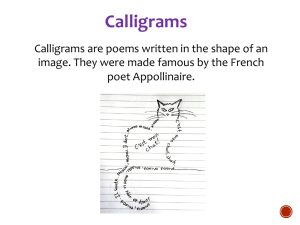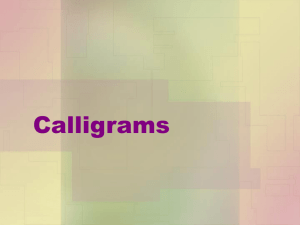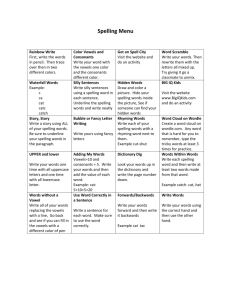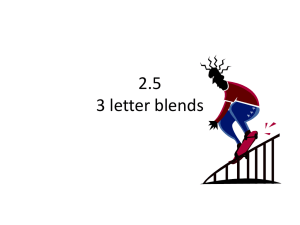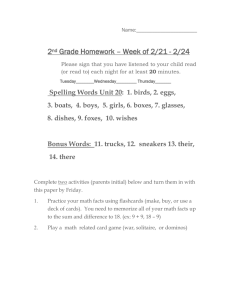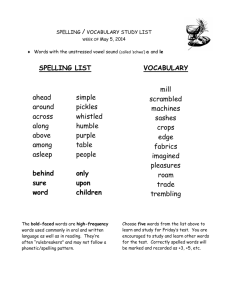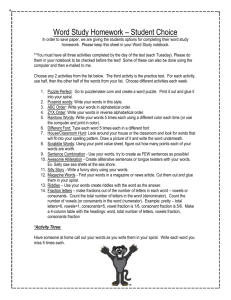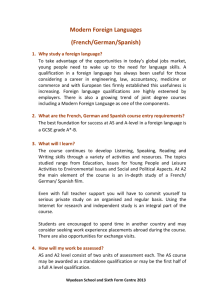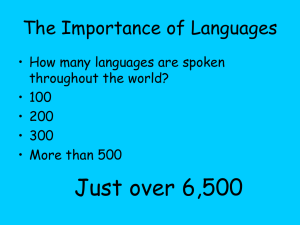KS2 Writing Module follow up 1
advertisement
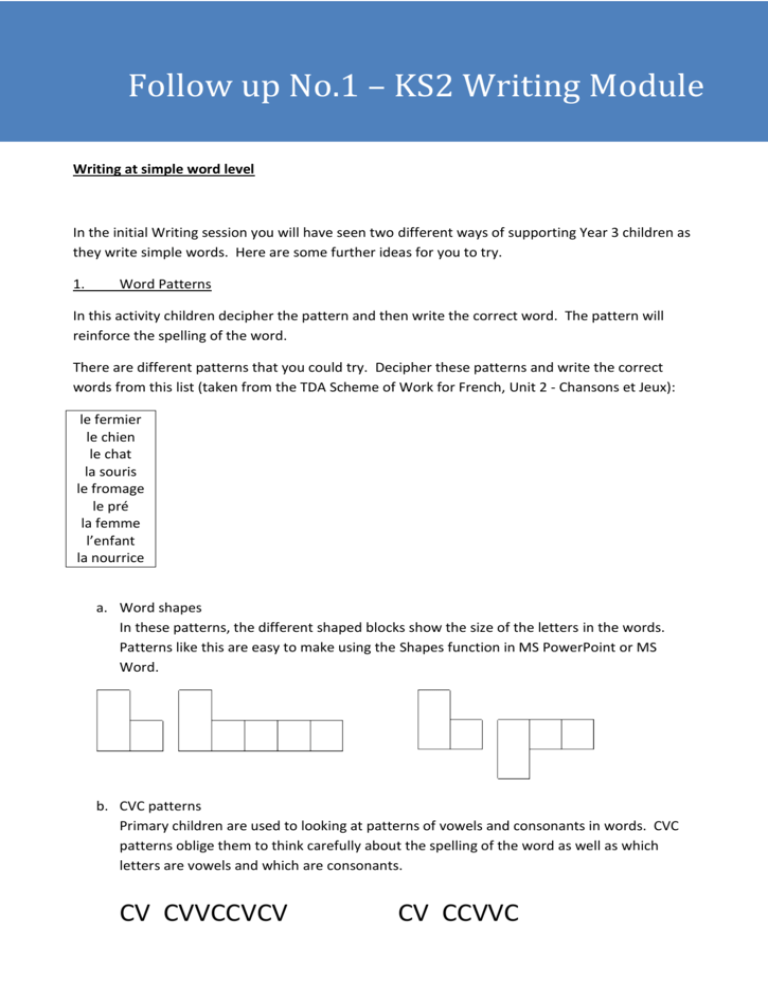
Follow up No.1 – KS2 Writing Module Writing at simple word level In the initial Writing session you will have seen two different ways of supporting Year 3 children as they write simple words. Here are some further ideas for you to try. 1. Word Patterns In this activity children decipher the pattern and then write the correct word. The pattern will reinforce the spelling of the word. There are different patterns that you could try. Decipher these patterns and write the correct words from this list (taken from the TDA Scheme of Work for French, Unit 2 - Chansons et Jeux): le fermier le chien le chat la souris le fromage le pré la femme l’enfant la nourrice a. Word shapes In these patterns, the different shaped blocks show the size of the letters in the words. Patterns like this are easy to make using the Shapes function in MS PowerPoint or MS Word. b. CVC patterns Primary children are used to looking at patterns of vowels and consonants in words. CVC patterns oblige them to think carefully about the spelling of the word as well as which letters are vowels and which are consonants. CV CVVCCVCV CV CCVVC c. Colour patterns The CVC words could also be depicted using colours rather than letters. Here is an example, where the green circles are the consonants and the yellow circles are the vowels: d. Gender patterns To reinforce the difference between masculine and feminine, use two different colours for the two genders (or three for German). Children will then have to look carefully at the gender of the words as well as the number of letters. 2. Can you think of any other patterns that you could use? Calligrams Children are introduced to calligrams in Year 3 Literacy, where they often use them to express the meaning of adjectives, such as this one: A calligram can be a poem, a phrase, or a simple word in which the typeface, the calligraphy or the handwriting is an important part of the focus. Thus, with the above example, the word hot is written and embellished in such a way that it looks hot. Its appearance reflects its meaning. There are many ways in which calligrams can be used to support Year 3 children as they write simple words in another language. They could write the word in the shape of the item that it spells out, such as: However if they use a simple colouring-in picture of the same object, they can create the shape of the object by writing the words inside the outline many times: This is a very effective way of embedding the spelling and will help the children to memorise the words. We can also use stencils to create a similar effect. Place the stencil on the paper, paperclip it to stop it moving, and fill the spaces with words in the new language. This angel is filled with Spanish Christmas words: Children enjoy being artistically creative in tandem with using their language creatively. 3. Choose a unit from your class’s scheme of work for Languages. Outline how you would use calligrams to support children as they write new words from the unit. Common spelling errors There are certain words in French, Spanish and German that children commonly mis-spell. The following list is the result of a crowd-source of language teachers on Twitter: FRENCH: nerf beucoup / beacoup familie blue souer jamie interestant compains chevaux fréré collage je mapple / jem’appele etc. trios mecredi jabeet vancances neuf beaucoup famille bleu soeur j’aime intéressant copains cheveux frère collège je m’appelle trois mercredi j’habite vacances ENGLISH: nine many / a lot family blue sister I like interesting friends hair brother school I am called three Wednesday I live holiday(s) SPANISH: abburido me enchanta aburrido me encanta boring I love anos viente mardre años veinte madre years twenty mother GERMAN: Ich speile Wochende Fruende Ich spiele Wochenende Freunde I play Weekend friend Why do you think there are more French words on the list than Spanish or German? Can you explain why some of these errors have been made? What steps could you take, as the teacher, to ensure that more of these words are spelt correctly?
